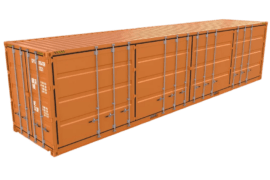The first thing that comes to mind at the mention of trademarks is logos, brand names, product names, and other visual identifiers of a product. But not many people think that you could trademark 3D models.
Often product creators seek to protect their 3D models as industrial designs. The problem with this approach is that protection for your designs will only last for as long as the law stipulates for industrial design protections, which in many countries is ten to fifteen years.
On the other hand, trademark protections can last for as long as you continue paying maintenance fees for your designs.
What Is a Trademark, and Where Do 3D Models Come In
The simplest definition of a trademark is a brand or product identifier such as a name, logo, slogan, and other marks that help distinguish a product from other products.
3D models can be considered trademarks when used in connection with goods and services and can serve as an identifier of a brand or product. This means you could trademark the shape of a product or even its packaging.
However, for a 3D model package to qualify for trademark protection, the shape must be non-functional. So, if the shape’s only purpose is to contain a product, you can not trademark it.
Also, utilitarian objects such as knives, forks, and machinery parts cannot be trademarked. Instead, you could look into industrial design protections if you believe your creations are worth protecting.
Start With a Trademark Search
For a brand identifier to qualify for registration, it must be unique and not closely resemble another registered or pending trademark. So the first step in determining if your models are registrable is conducting a trademark search.
When registering your 3D model in Canada, you must first comb through the Canadian Intellectual Property Office’s (CIPO) trademark database to ensure no similar model has ever been registered. If you live in the US, you must search on the United States Patents And Trademarks Office’s (USPTO) trademark database.
Searching your country’s database is not enough. You also need to conduct an online search and international trademark databases to ensure that your models will have clearance for registration. If you want to perform a thorough trademark search, your best bet will be working with an IP expert, such as an IP lawyer or an IP agency.
Where to Register
Countries will have different agencies for registering intellectual property. In Canada, CIPO is the constitutionally mandated agency for IP rights registration. CIPO offers three options for IP rights registration; online, mail, and in-person registration. The most preferred option is the online registration process because it is much cheaper and more efficient.
USPTO offers three options; online, mail, and private trademark attorney. Other countries may have different procedures, so you may want to conduct an online search if you are unsure of the process in your country.
If your 3D model registration is successful, you receive a certificate and exclusive rights to use your models. Also, trademark registration gives you the legal power to stop others from using your designs, including suing for damages caused.
The Scope of Your Protections
In most countries, trademark protections run for ten years from the registration date. However, you have a right to renew them every ten years, allowing you to maintain ownership of your trademarks for as long as you wish, but you have to pay a maintenance fee every ten years.
Geographical boundaries limit trademark protections. However, you could enjoy cross-border protections in countries that have IP treaties with your country. But the easiest way to get protections on a global scale would be to register your models with WIPO, which offers IP protections on a global scale. It is important to note that laws may differ by country, meaning some countries may not recognize your 3D models as trademarks.






